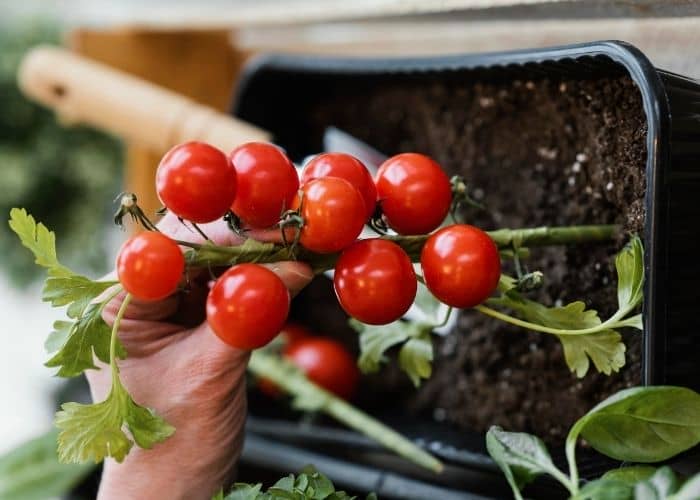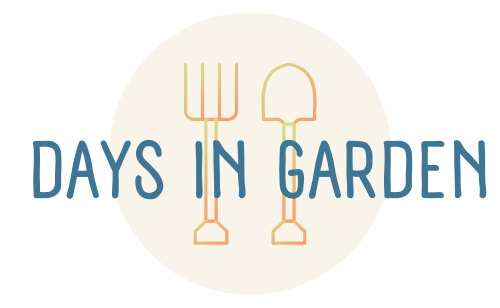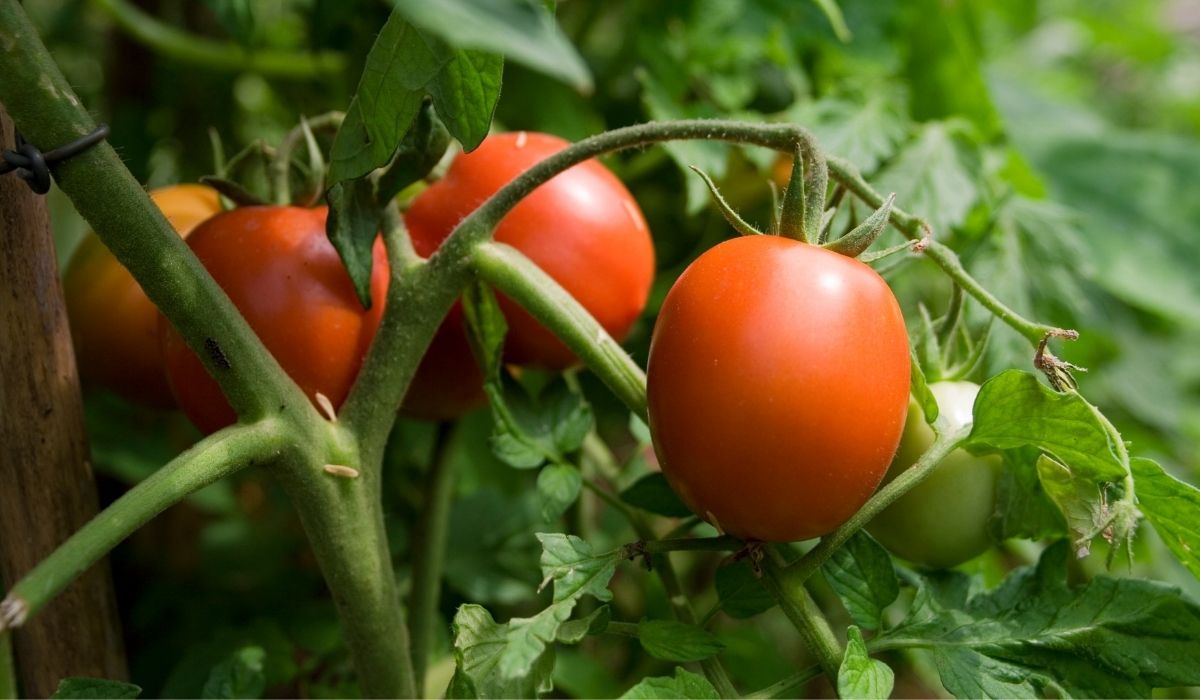Last Updated on May 31, 2022
We have all the information you need on how to choose the Best Soil for Tomatoes to Grow. We also cover information on how to grow tomatoes in pots and other useful gardening tips. Our popular gardening blog covers different gardening topics like soil types, plant care, fertilizers, and others.
If you are looking for info on growing tomatoes, this is the right place to be. Tomatoes are a versatile fruit with a wide array of uses. You can eat them, cook them in a variety of ways, or use them for juice making. When planting tomatoes, it is important to select the best soil for tomatoes to grow.
This will give you delicious tomatoes from your very own garden. Growing tomatoes in the most natural way will also enhance your gardening knowledge. The gardening tips below will be useful whether you’re a beginner or an experienced grower. Have a look below at the traditional and advanced techniques used in planting.
What To Consider Before Planting Tomatoes?
Tomatoes are incredibly easy to grow as they thrive in almost any environment. You can even grow them indoors during the winter months. However, before you start planting, there are a few things you should consider.
A. Do you have an appropriate location for your tomatoes?
B. What type of soil do you have?
C. Will your plants be watered regularly, or will they rely on rainfall?
D. What are the temperatures going to be like where you live?
There are many ways to grow tomatoes, and each method has its benefits and its disadvantages. The one thing that every tomato gardener must do before starting the planting process is prepare the soil properly. Therefore, knowing which is the best soil for tomatoes to grow is vital.
When starting off with a new garden, there is always a period of trial and error. As you learn more about gardening and your tomato plants begin to produce, you will find out what works best for you.
Although there are many benefits to planting tomatoes, and it is something we all should consider, growing them in the right condition is a must if you look forward to delicious harvests.
Read more about Best Soil For Tomatoes In Grow Bags – A Guide To Grow Nutrient Rich Tomato Plants
What Is The Best Soil For Tomatoes To Grow?
Here’s the scoop on the best soil for tomatoes to grow. Tomatoes like it dry most of the time, so if you live in an area with lots of rain, where you plant them is important. It is also important to get your soil tested and make sure it’s not too acidic.
Tomatoes can be grown in almost any soil and are generally considered a very forgiving plant. In addition, it is recommended to grow tomatoes with a thick layer of mulch or compost to provide an organic, nutrient-rich environment to grow in. This will enhance their taste and help them thrive.
The best soil for tomatoes to grow in well-drained sandy loam with plenty of organic matter. Tomatoes like well-drained soil because it provides an optimal environment for healthy growth. Most gardeners have a bad habit of over-fertilizing their soil. This can cause several problems for tomatoes. The first and worst problem is that the soil becomes too waterlogged.
In addition, nutrients leach out, and this can make tomatoes take up more water than they need, which can cause disease. Too much fertilizer can make plants weak. A plant that is weak is not as likely to survive in the cold months of winter. This can lead to damaged or even dead tomatoes during these months. Therefore it is essential to use the best soil for tomatoes to grow healthily.

Read more about What Are The Best Soil Amendments For Tomatoes – A Guide To Nutritious Tomato Plants
Organic Fertilization To Increase The Yield And Flavor Of Tomatoes
As organic farmers know, there are many ways to fertilize tomatoes, but not all work the same. Each method requires specific soil and pest conditions. When it comes to growing tomatoes, no two gardens are alike. Even if you plant the same variety of tomatoes in the same place every year, the yield can be vastly different.
What works for one grower does not mean it will work for another, just as what worked last year might not work this year. However, with an understanding of how plants work and knowing what they need, you can take control of your tomatoes and make a difference.
It is important to learn which organic fertilizers work best with your specific soil and conditions. This will help you make the right decision about your tomatoes. Grow the right tomato in the correct environment, and using the best soil for tomatoes will enhance their taste.
Fertilizing with natural organic fertilizers will significantly increase your yield by adding to the number of sugars (flavor) in the tomato. If you have a greenhouse, make sure to cover the tomatoes with some type of light fabric as they need to be kept out of direct sunlight. Here’s a video on how to plant tomatoes in two different ways.
How To Plant Tomato Seedlings In Good Soil?
It’s very important to use the best soil for tomatoes when planting. You should plant your tomato seedlings in rich fertile soil such as composted manure or well-rotted manure. Use a hoe to dig out any clods of soil and rocks before planting. Dig the hole, so it’s big enough for the tomato seedling’s root ball to fit into it with room to spare.
Here are tips to follow when planting tomatoes seedlings:
To give your tomato seedlings the best start possible, put your seedlings in the ground during early spring.
If you don’t have a greenhouse or if you are on a budget, you can still grow tomatoes in a sunny window. You just need to choose the best soil for tomatoes when planting them.
Tomato seeds will germinate in 7 to 14 days. When they sprout, give them a drink of water every 2 hours. Then transfer them into individual cells, or holes in paper towels.
For each plant, start with 2 cups of seed, and add an extra cup of seed when they sprout.
You can grow tomatoes inside or outside. If you do it outside, put the plants 10 inches away from a north-facing window, and about 6 inches from a south-facing window. Water them daily, especially in the first few weeks after planting.
Keep the plants at 70 degrees F. They will produce more fruit if temperatures are between 55 and 75 degrees F.
Tomato plants are heavy feeders, so apply a complete fertilizer once per month. Fertilizer contains phosphorus, potassium, and nitrogen, which are essential to their growth.
Tomatoes are grown as annuals. If they fail to produce, pull them up and replant them.
Conclusion
Good, well-drained soil is essential for tomato plant growth. It must be able to hold the required amount of water and air without being compacted. For tomato seedlings, rich soil with ample organic matter and a deep root zone is ideal. Avoid sand or rocky soils, which can dry out too quickly and lead to fungal problems.
It is also advisable to start your tomatoes indoors and transplant them to their final home once they reach 6 to 8 inches tall. This will avoid transplant shock and give you the best possible chance of success as tomatoes do not like transplant shock.
When choosing a location for your plants, remember to use the best soil for tomatoes to grow properly. You need to be able to monitor your plant to make sure that it has enough sunlight, air circulation, and water. Make sure to provide the plants with regular fertilizer and organic amendments, such as compost. Click on the link to find out the garden prep techniques for tomatoes.
What is the best soil mix for tomatoes?
The best soil mix for tomatoes is 1/3 peat moss, 1/3 perlite, and 1/3 topsoil. If you're planting seeds, use a finely sifted mixture of all three.
What should I add to my soil before planting tomatoes?
Before planting tomatoes, you can add 5-10% composted manure and 10% gypsum to your soil. This is good for tomatoes because they need nitrogen as well as phosphorous and potassium.
What fertilizer is best for tomatoes?
The best fertilizer for tomatoes is nitrogen-rich fertilizer.
Can you use potting soil for tomatoes?
Yes, you can use potting soil for tomatoes especially if it is nutrient-rich.
Learn more about The Best Soil For Tomatoes And Peppers

